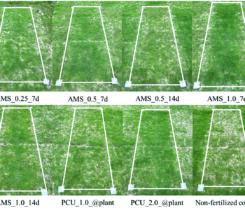A better way to optimize nitrogen applications on bentgrass greens
Doug Soldat, Ph.D., and his doctoral graduate student Qiyu Zhou suggest that relying on temperature alone — in models such as the PACE Turf Growth Potential (GP) model — to estimate turfgrass growth rate is inaccurate.
Using several machine-learning random forest (ML-RF) models — based on factors including weather data, management practices and soil — the duo says it predicted turfgrass clipping removal more accurately than the PACE model.
The objectives of their research were to:
- Investigate the combined effect of management practices, weather and soil characteristics on creeping bentgrass response;
- Develop a machine learning growth model for creeping bentgrass that can accurately estimate a short-term turfgrass growth rate; and
- Test the feasibility of using the developed ML-RF prediction model to improve nitrogen management.
They conducted a two-year experiment on creeping bentgrass growth response and corresponding N fertilizer usage to the ML-RF model-based N-fertilization plan and other commonly used N-fertilization strategies.
Soldat and Zhou found that temperature, relative humidity and evapotranspiration were the key weather factors for estimating bentgrass growth. Foot traffic, nitrogen rate and soil moisture were weakly correlated with bentgrass growth, although the ML-RF model’s accuracy substantially increased with those variables included.
A study using the ML-RF model over two years on two different root zones found the model resulted in acceptable turfgrass performance with about 50 percent less N fertilizer usage than the method that recommended the most N fertilizer and about 30 percent less fertilizer than the traditional way that superintendents schedule N applications.
The model is, however, only effective for its original testing location, suggesting that individual golf courses must develop customized growth prediction models to manage nitrogen accurately. To do this, a superintendent can collect and record clipping volume for at least one year.

Photo: Mike Kenna, Ph. D.
Mike Kenna, Ph.D., retired director of research, USGA Green Section. Contact him at mpkenna@gmail.com.












